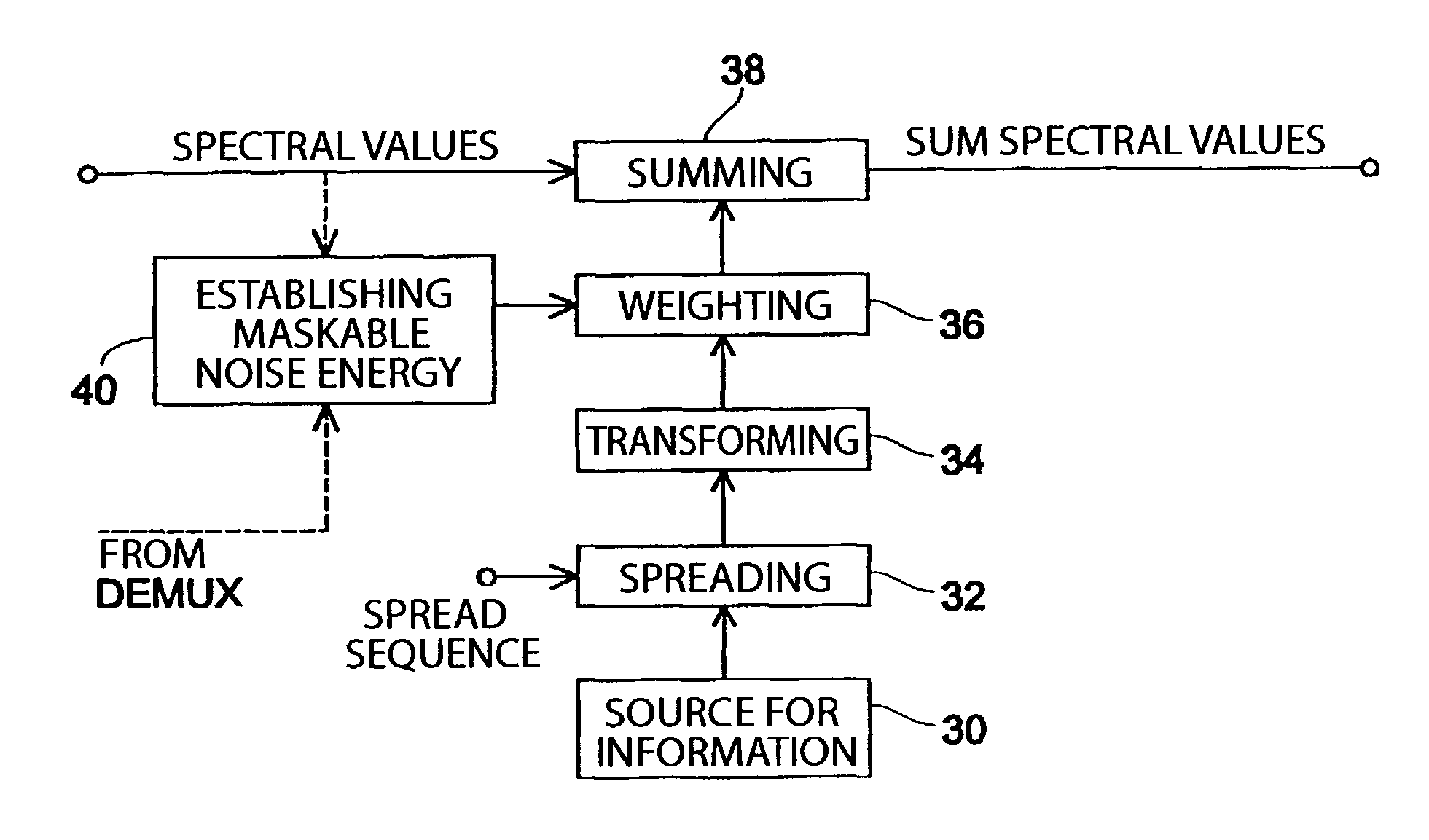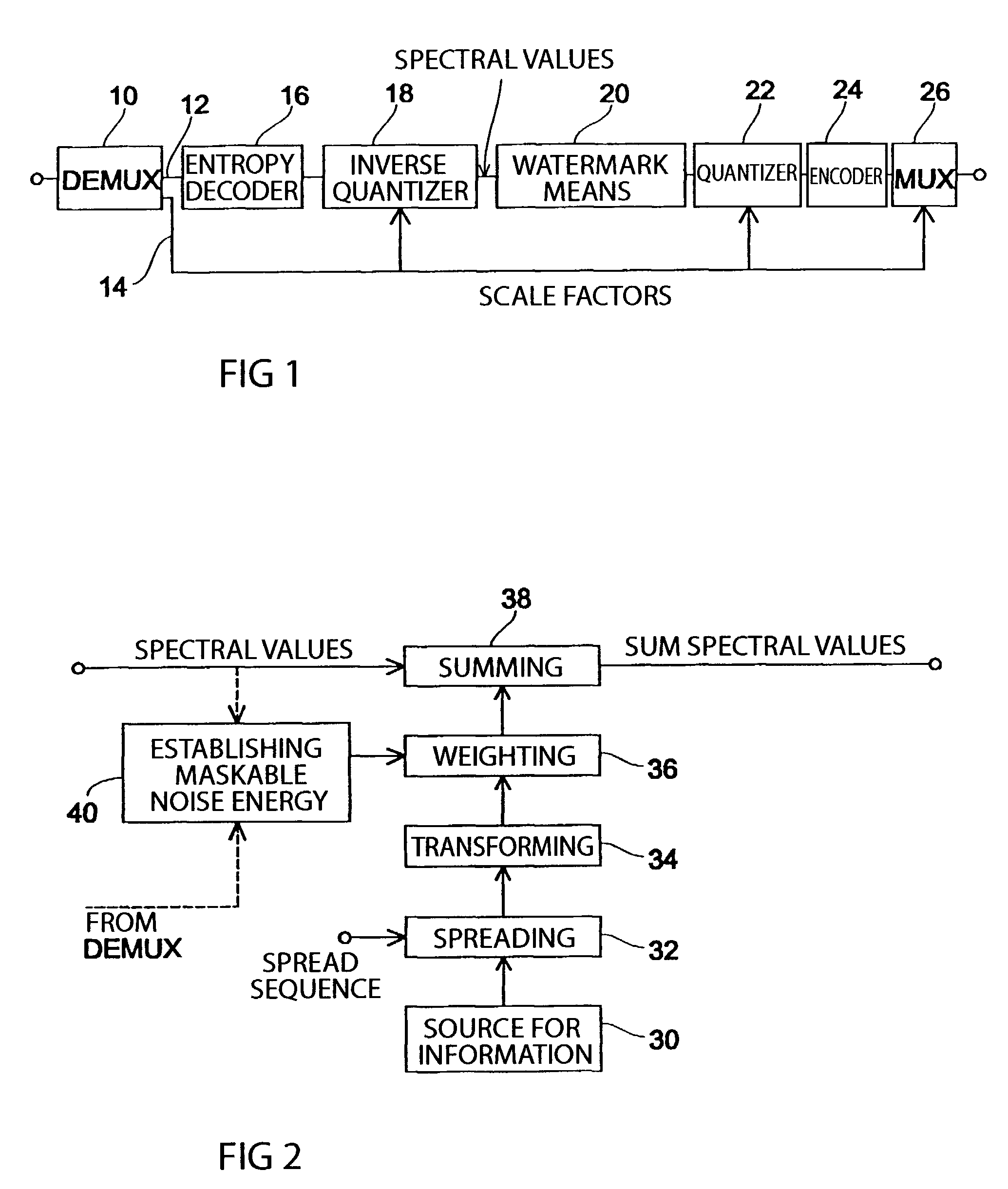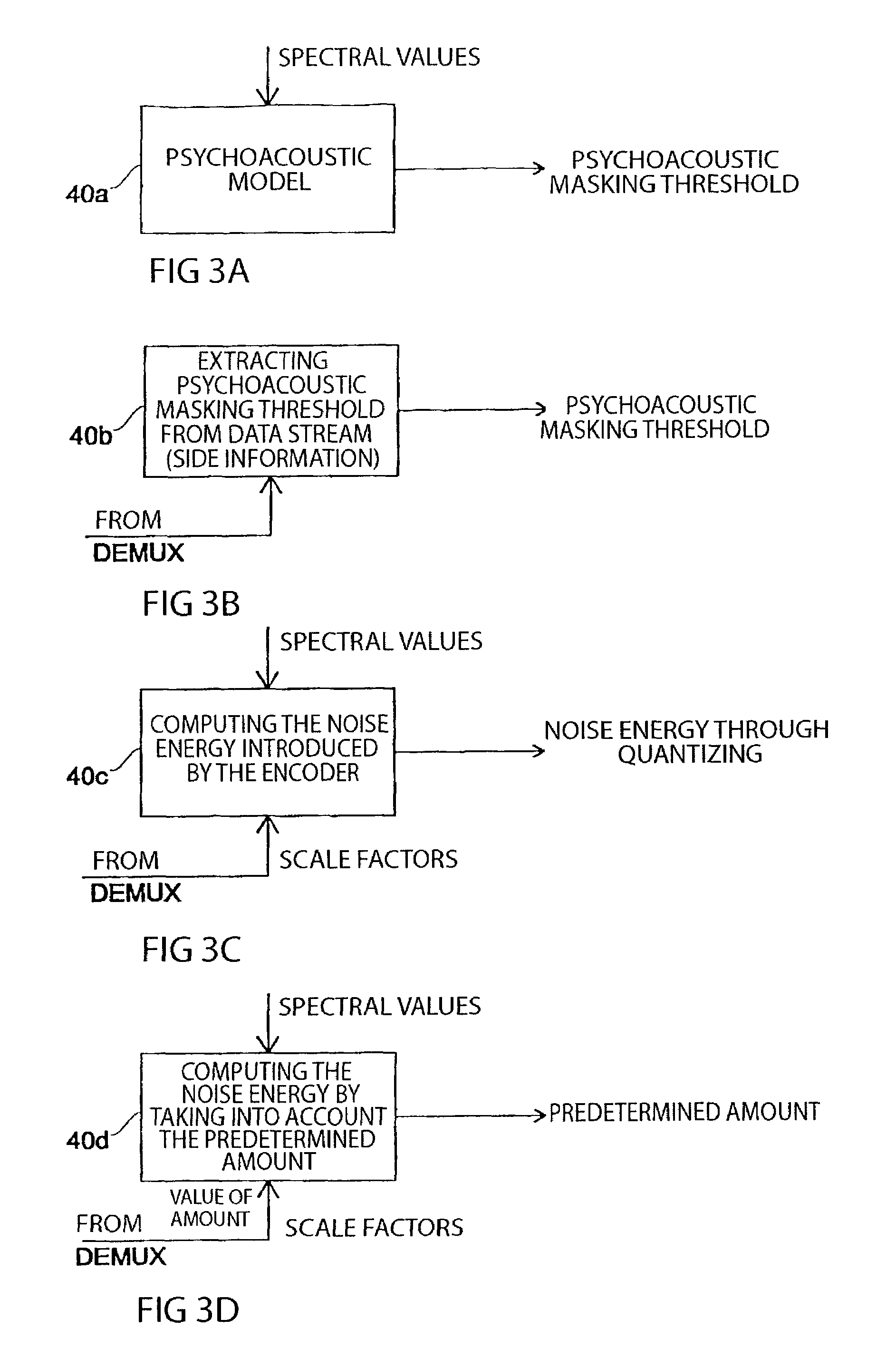Method and apparatus for introducing information into a data stream and method and apparatus for encoding an audio signal
a data stream and information technology, applied in the field of audio signals, can solve the problems of uncontrollable copying of works, unauthorised authorisation, and piracy of music, and achieve the effects of reducing the audio quality of the audio signal, facilitating implementation, and good interoperability
- Summary
- Abstract
- Description
- Claims
- Application Information
AI Technical Summary
Benefits of technology
Problems solved by technology
Method used
Image
Examples
Embodiment Construction
[0041]Before the individual Figs. will be referred to in more detail, the system theoretical background of the present invention will be briefly discussed. In general, the introduction of information into the audio signal should not lead to an audible quality deterioration of the audio signal, or only to a barely audible one. In order to ascertain as to how much energy the signal representing the information to be introduced may have, the masking threshold of the audio signal is continuously computed by using a psychoacoustic model. The frequency-selective computing of the masking threshold by using, for example, the critical bands as well as a plurality of further psychoacoustic models is known in the art. As an example, it is referred to the standard MPEG2-AAC (ISO / IEC 13818-7).
[0042]The psychoacoustic model leads to a masking threshold for a short-term spectrum of the audio signal. Usually, the masking threshold will vary across the frequency. As a matter of definition, it is ass...
PUM
 Login to View More
Login to View More Abstract
Description
Claims
Application Information
 Login to View More
Login to View More - R&D
- Intellectual Property
- Life Sciences
- Materials
- Tech Scout
- Unparalleled Data Quality
- Higher Quality Content
- 60% Fewer Hallucinations
Browse by: Latest US Patents, China's latest patents, Technical Efficacy Thesaurus, Application Domain, Technology Topic, Popular Technical Reports.
© 2025 PatSnap. All rights reserved.Legal|Privacy policy|Modern Slavery Act Transparency Statement|Sitemap|About US| Contact US: help@patsnap.com



